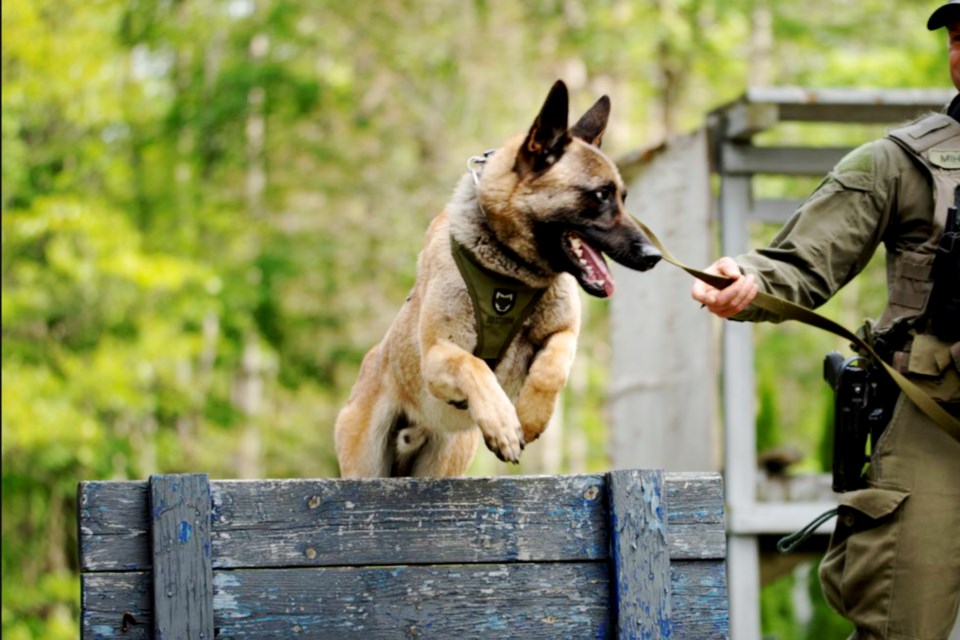THUNDER BAY - The K-9 unit is an important part of the Ontario Provincial Police and the dogs and handlers need to be constantly on top of their training to ensure that both of the dogs and their handlers can do their jobs properly.
“So the OPP has about the second largest canine program and counted in Canada next to the Mounties. We currently have 51 dogs in the program and they're generally tasked with different jobs,” said Murray Deruiter, provincial training coordinator, OPP K-9 Unit.
“We have 31 handlers and everybody starts out with a general service dog which is the bread-and-butter that's the typical police dog that you see on TV. GSD means general service dog, they're trained to do a number of different things.”
The main job of the Ontario Provincial Police’s canines is tracking humans through either tracking or area searches.
“That could be a criminal that commits a crime and flees the scene on foot or could be that of a missing person. They're also trained to find evidence in relation to a crime so they have the ability to detect evidence that the bad guy would have handled and discarded along the track so they can be able to find that to help corroborate the case towards that person,” said Deruiter.
“And then if there's a need that dog is trained to aggressively apprehend that person if lesser means are not available, so they're trying to apprehend or to bite that person if required. And then after they've been in service for about six months we had a narcotic detection profile to these dogs.”
Police dogs have very important jobs and on top of frequent training camps their handlers need to be training with them often to keep them at the top of their game.
“All dogs behave differently when they're doing different tasks and we need our handlers to be an expert on reading their dog's behaviour changes so it's very important that that relationship is there,” said Deruiter.
“It's a perishable skill So it's very, very important to do follow-up in the maintenance training everyday if they can. Handlers have to do a mandatory of 24 structure training days a year and they have to validate every profile that the dogs are trained to do so it's definitely a team effort.
The amount of training and work done with between the handlers and dogs leads to a relationship stronger than that of the average pet and pet-owner.
“I've been in the K-9 program almost 30 years now, but a Handler for 25 of those years and I spent more time with my service dogs than I did with my wife because everyday my dog stayed at home with me, there are kennels in my backyard he's my responsibility and everyday i go to work my whole shift is just me and my dog,” said Deruiter.
“And so you have to learn every little idiosyncrasy of that dog and they're just a great sounding board they don't talk back to you, they're just happy to see you and just want to work with you because they get to play and get rewarded for doing stuff, it's a great relationship.”
